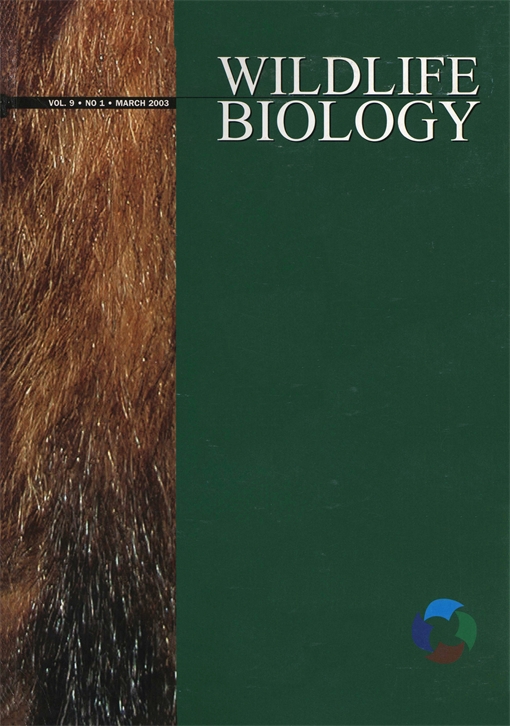In 1999 and 2001, we compared the population characteristics of capercaillie Tetrao urogallus, black grouse T. tetrix and hazel grouse Bonasa bonasia inside the pristine forest reserve State Natural Reserve ‘Pinezhskiy’ in northwestern Russia and in the logged forests surrounding the reserve. We also compared the abundance of mammalian predators and birds of prey. The August density of capercaillie was lower in logged forests than in the reserve (P = 0.05), but black grouse tended to be more abundant in the logged area (P = 0.08). For hazel grouse, no difference in abundance was found between the reserve and the logged area. Reproductive success of all three grouse species was generally higher in the logged area than in the reserve. A winter track survey indicated low abundance (< 1 track/10 km/24 hours) and no difference in density of small and mediumsized mammalian predators between the reserve and the logged area. The only exception was red fox Vulpes vulpes whose tracks were recorded only in the logged area. Buzzards Buteo spp. and goshawk Accipiter gentilis were the most numerous birds of prey. Goshawk tended to be more common in the reserve (P = 0.09), whereas buzzards were seen more often in the logged area (P = 0.1). Tracks of mountain hare Lepus timidus was twice as abundant in the logged forest (P = 0.02), whereas tracks of red squirrel Sciurus vulgaris was almost 10 times more numerous in the reserve (P < 0.001) than in the logged area. Judged by the remains found, the majority (72%) of grouse were killed by birds of prey. Our study suggests that reproduction of all three species of forest grouse in this region remains stable or increases following logging. We hypothesise that this may be due to the type of logging performed and to differences in the composition of predators and of prey other than grouse inside and outside the reserve.
How to translate text using browser tools
1 December 2003
Does fragmentation by logging reduce grouse reproductive success in boreal forests?
Vladimir G. Borchtchevski,
Olav Hjeljord,
Per Wegge,
Andrey V. Sivkov

Wildlife Biology
Vol. 9 • No. 4
2003
Vol. 9 • No. 4
2003
forest grouse
logging
northwestern Russia
predation




